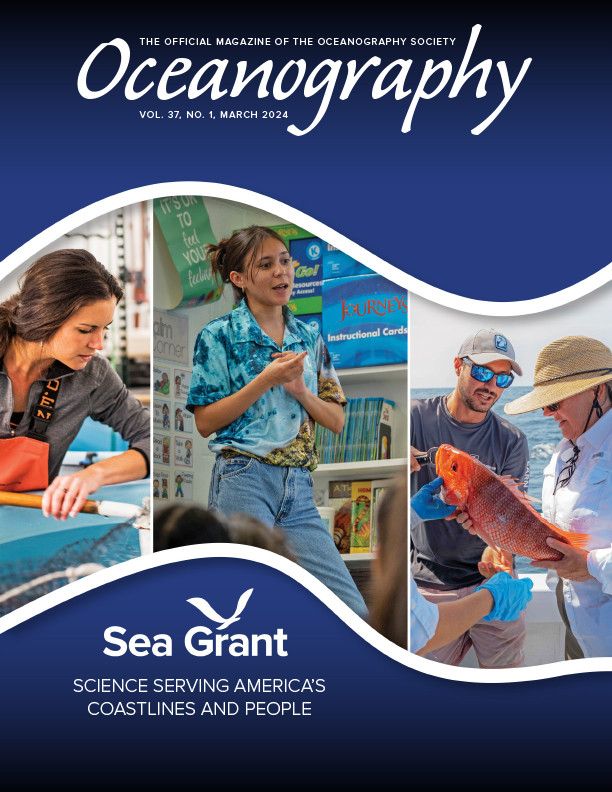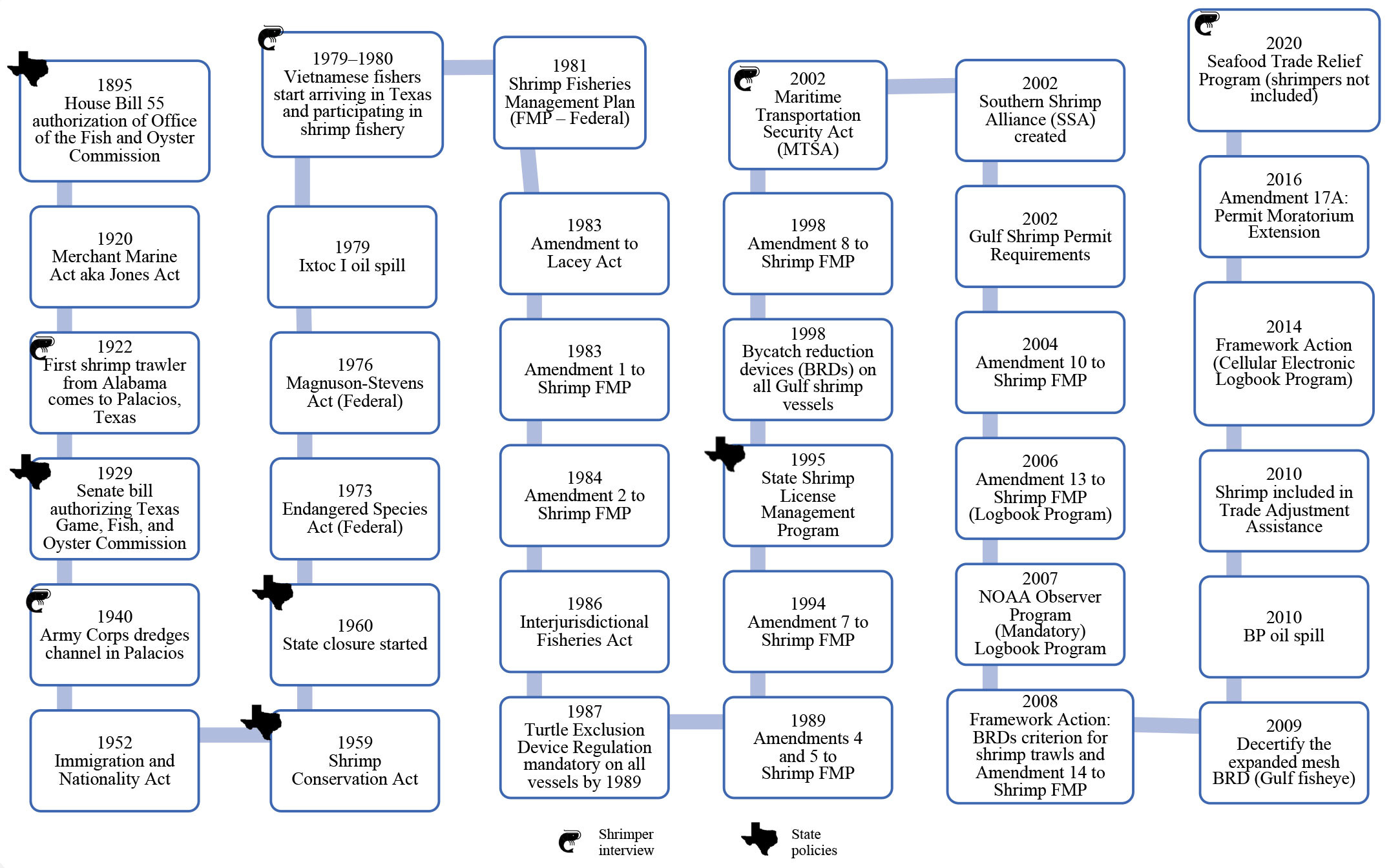Full Text
The Texas shrimping communities of Palacios, Port Isabel, and Port of Brownsville were once Gulf of Mexico shrimping capitals; commercial shrimping in Texas brought in about $363 million in 1986 (adjusted for inflation) and around $371 million in 2019 (NMFS, 2022). However, a decline that began in the 1980s has since continued toward economic stagnation. To understand the influence of policy and regulation on fisheries livelihoods, we used mixed methods research to achieve a richer understanding of this complex problem (Creswell and Plano Clark, 2018).
Trust is an integral part of building relationships with natural resource users and is often the deciding factor in successful engagement with these communities (Metcalf et al., 2016). Sixty interviews with shrimping communities were conducted during the summers of 2020 and 2021 with assistance from the National Sea Grant Law Center, Texas Sea Grant agents and specialists, commercial shrimping boat owners, and others associated with the shrimping industry. The interviews were conducted in a bilingual setting to promote development of trust between interviewer and interviewee (full results can be found in Lozada, 2022). The words of shrimpers and Sea Grant agents were used to piece together a historical timeline of the most influential (both hindering and assisting) policies, laws, and events. Figure 1 provides an abridged timeline showing the most mentioned laws and events (Lozada, 2022). The National Sea Grant Law Center conducted a detailed literature review of policies and legal actions that have impacted the fishery over the past several decades. Shrimpers’ perceptions of adaptations the industry made in response to various laws and regulations over time were then compared to influential fisheries-related policies.
|
|
Interview results revealed the duality of perceptions when shrimpers were speaking about landmark regulations such as turtle excluder devices (1989) or state closures of the fisheries (1960). Some felt that “creating relationships” with organizations like Texas Sea Grant or with other shrimpers across the Gulf states helped the industry during hard times. When the “old-timers”—individuals who had risen through the crew ranks, some of them now boat owners—discussed the difficulties of the fishery closures or the amendment of the 1983 Lacey Act (under which Mexican waters were closed to US commercial shrimping), they always noted how a Texas Sea Grant agent had helped them develop a strategy to address the challenges. In fact, it was in collaboration with Texas Sea Grant that shrimpers created new trawls and improved the design of the turtle excluder devices and bycatch reduction devices. These trial-and-error processes enabled the industry’s adaptation to mandatory regulations.
Shrimpers consistently voiced frustration over the confusion caused by lack of clear communications around implementation of numerous regulations, indicating that there is a problem in how policy is communicated to those affected by it. In some cases, a shared understanding of the communication issues has been co-developed through participatory science and management programs in which the participation of shrimpers in data collection and interpretation was enabled, with Sea Grant agents and researchers acting as bridging organizations and partners in the management process. Thus, the community could partake in community science that allowed for a blend of applied research methods with interactive learning and the communication of the process and results (Woodhill and Röling, 1998; Charles et al., 2020). This approach enables communities to participate in troubleshooting and creates a sense of ownership of the data and the experience.
The mixed methods approach (Lozada, 2022), enabled by Sea Grant’s existing trusted network, facilitated the use of different forms of communication and engagement between researchers and shrimpers. None of the interviews would have been possible absent an established relationship. The biggest success was establishment of a dialogue among the different silos of industry, resource management, and academia that led to the co-creation of a shared narrative device (timeline) that can be used to understand the shrimpers’ (resource user) perspectives about their livelihoods. That information can be used to create more dialogue opportunities in support of adaptive co-management (Olsson, 2004). Using an academic framework in this case allowed for the local knowledge of the shrimping communities to be interpreted, communicated, and validated within the structures of academia, all while not having lost its own validity and truth within the larger systems of knowing (Lertzman, 2010).


